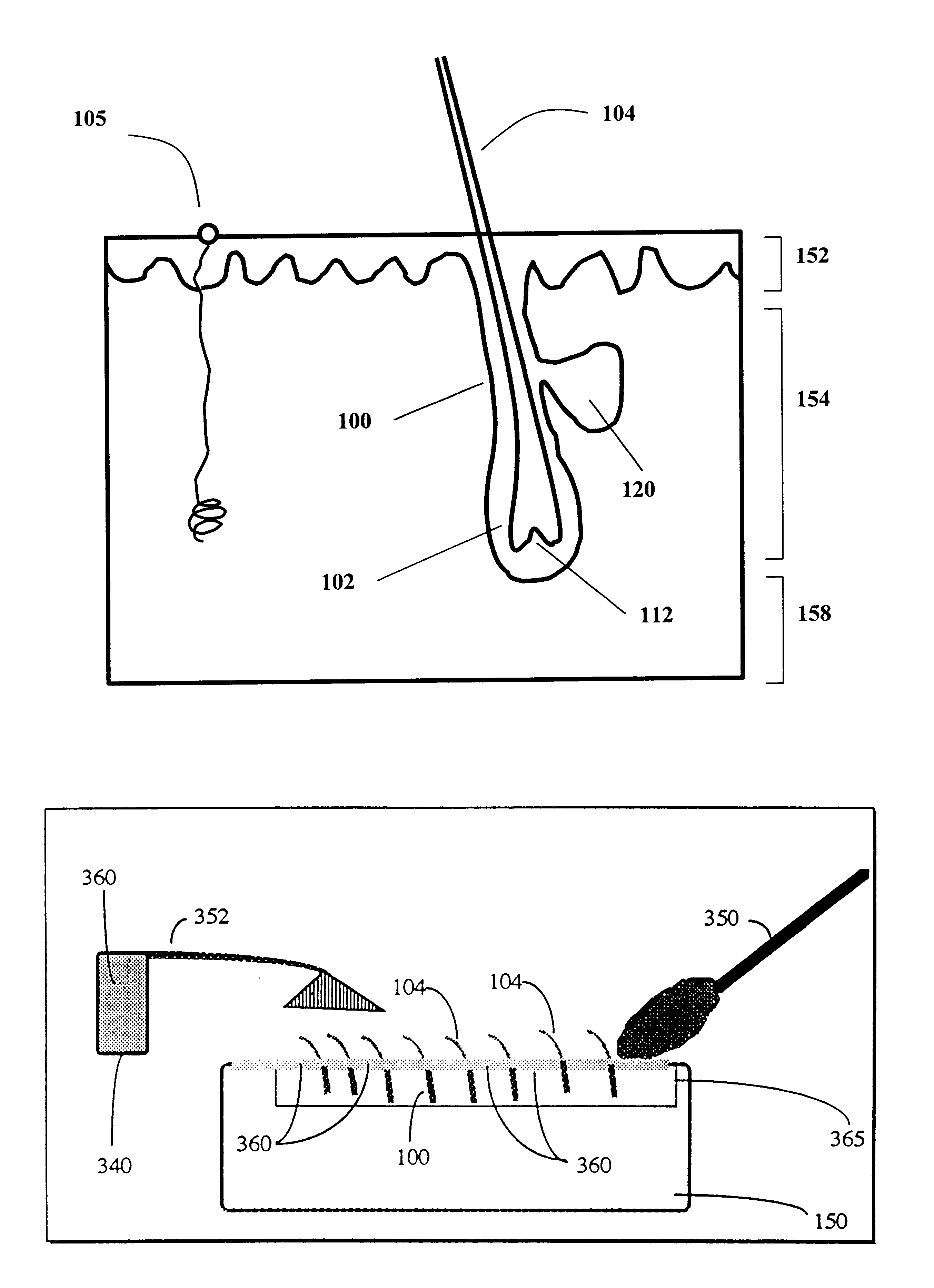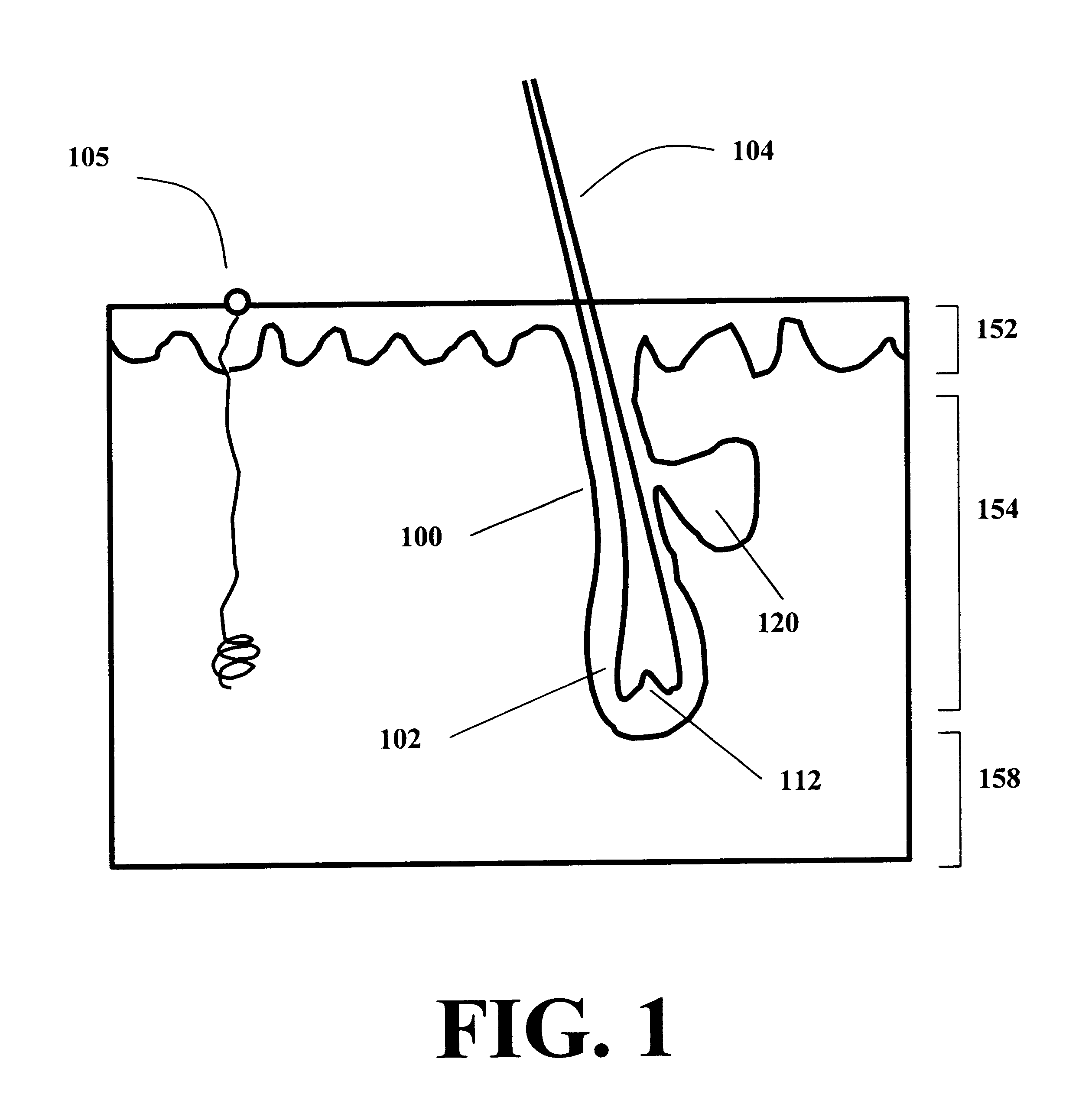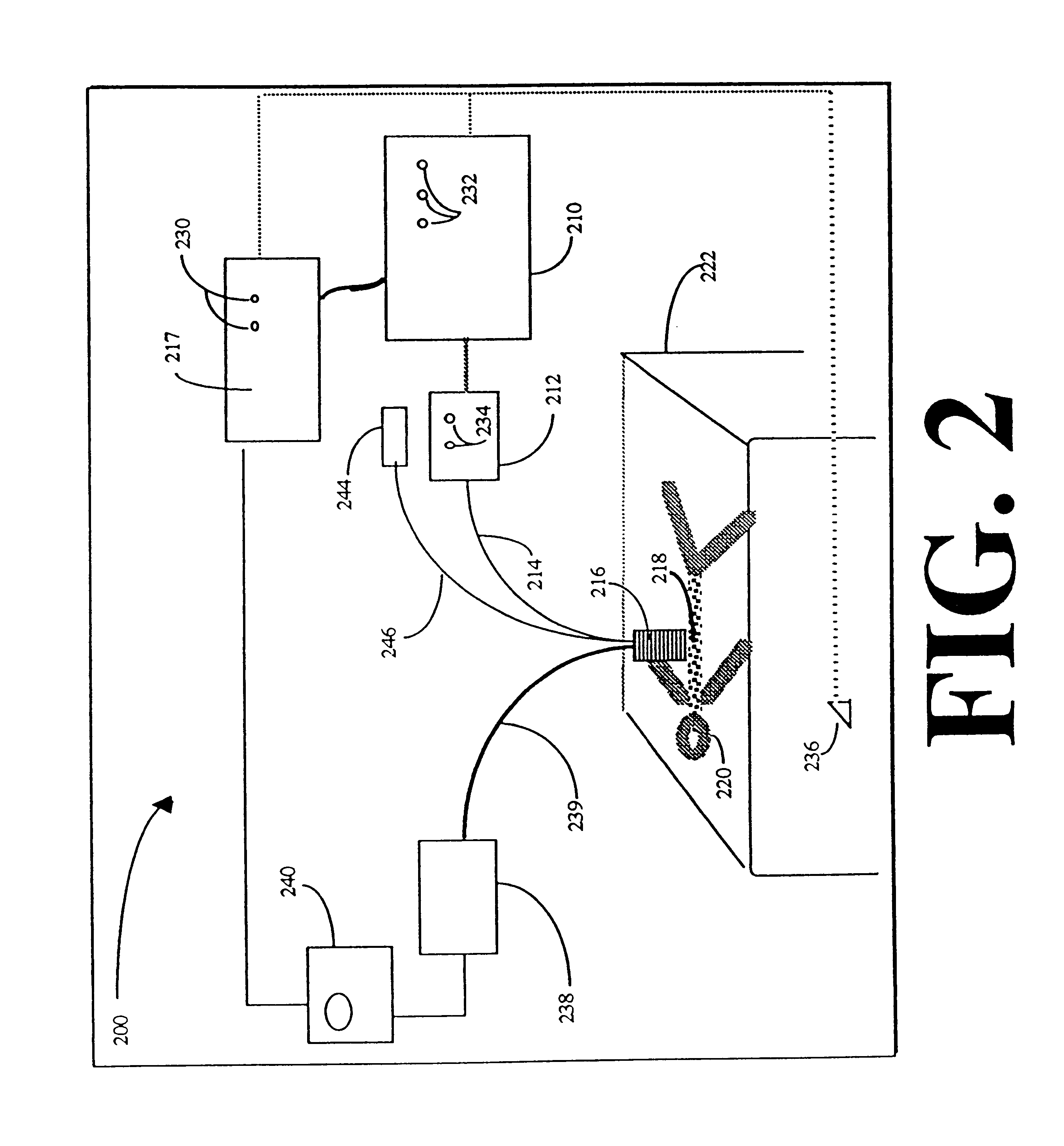Method for permanent hair removal
a hair removal and permanent technology, applied in the field of permanent hair removal, can solve the problems of regrowth of hair, affecting the appearance of hair, and affecting the appearance of hair, and achieve the effect of reducing the occurrence of hair regrowth
- Summary
- Abstract
- Description
- Claims
- Application Information
AI Technical Summary
Benefits of technology
Problems solved by technology
Method used
Image
Examples
embodiment 1
This embodiment is essentially the same as the one described by embodiment 1, above, except that instead of a large area beam, a small spot size beam is used so that the source beam output 605 is coupled substantially into only a single hair shaft and the beam interacts with one hair at a time (see FIG. 8A). The advantage of this single hair / focused beam embodiment is that the light can be more efficiently coupled into the hair fiber. A more efficient energy coupling, in turn, translates into an enhanced energy transmission and deposition within the hair follicle and a more efficient destruction of the hair. Thus, the beam dwell time over each hair is shorter and the beam can be scanned rapidly over an area equivalent in size to that of the large-area beams of embodiments 1A and 1B, and allows multiple-hair destruction in a treatment time substantially equivalent to that of the large-area beam of method 1.
Normally, such single-hair coupling embodiment would imply considerable length...
embodiment 3
This embodiment is essentially the same as the one described by embodiments 2A and 2B above (i.e., utilizing the small-area beams focused for destruction of a single hair at a time in combination with the rapid, large-area scanning) except that the skin preparation step includes bleaching the hairs to eliminate as much of the hair melanin pigmentation as possible and to mitigate absorption of electromagnetic radiation propagating in the hair shafts. The preparation and advantages of the pigmentation removal step were described above in embodiment 3 and illustrated in FIG. 10.
4. REMOVAL OF PIGMENTATION FROM HAIR SHAFTS, APPLICATION OF A SUBSTANCE OF HIGH REFLECTANCE PROPERTIES TO BOTH THE SKIN SURFACE AND HAIR DUCTS, HAIR SHAFTS CUTTING, LARGER BEAM DIAMETER / SINGLE BEAM METHOD OR SMALLER BEAM DIAMETER METHOD.
This embodiment is essentially the same as that described by embodiments 3A and 3B except that the step of applying high reflectance coating to the skin surface must also include...
embodiments 2a and 2b
Also, in the practice of this embodiment, (and unlike Embodiments 1A and 1B and Embodiments 2A and 2B) the application of a substance with an index of refraction which is lower than the index of refraction of the hair shaft itself or that of the skin (i.e., lower than 1.55.-1.6), is generally not necessary. In fact, the application of a substance with refractive index higher than that of the skin may be useful to enhance the optical fiber-like conduction of the follicle after the hair is pulled.
Thus, either after (preferably) or prior to the application of HRC and wax-depilation, the application of a substance with an index of refraction higher than that of the hair and the skin, and transparent to the beam wavelength of radiation, may be useful. A higher refractive index substance 1134 to the emptied follicle is shown in the left side of FIG. 11B. The substance 1134, shown filling the emptied hair ducts 1120 from which the hair shafts have been pulled, can serve as a fiber-core of ...
PUM
 Login to View More
Login to View More Abstract
Description
Claims
Application Information
 Login to View More
Login to View More - R&D
- Intellectual Property
- Life Sciences
- Materials
- Tech Scout
- Unparalleled Data Quality
- Higher Quality Content
- 60% Fewer Hallucinations
Browse by: Latest US Patents, China's latest patents, Technical Efficacy Thesaurus, Application Domain, Technology Topic, Popular Technical Reports.
© 2025 PatSnap. All rights reserved.Legal|Privacy policy|Modern Slavery Act Transparency Statement|Sitemap|About US| Contact US: help@patsnap.com



